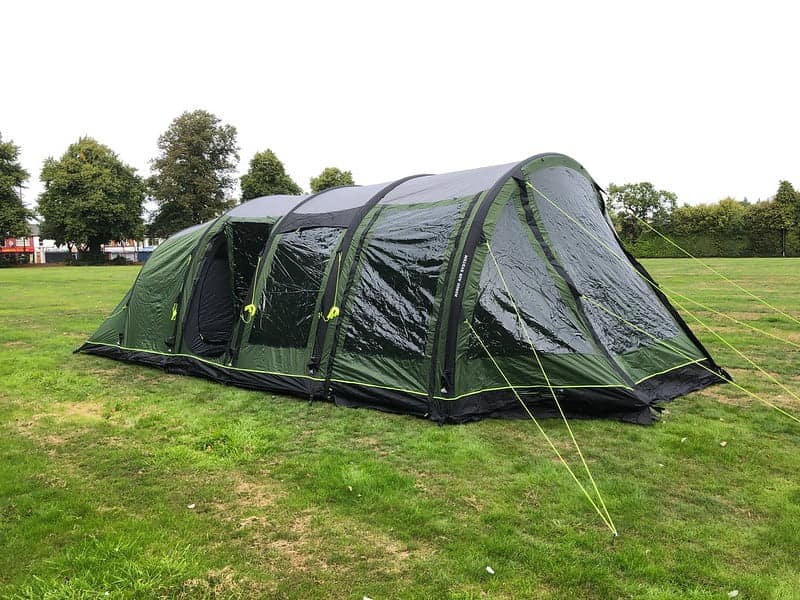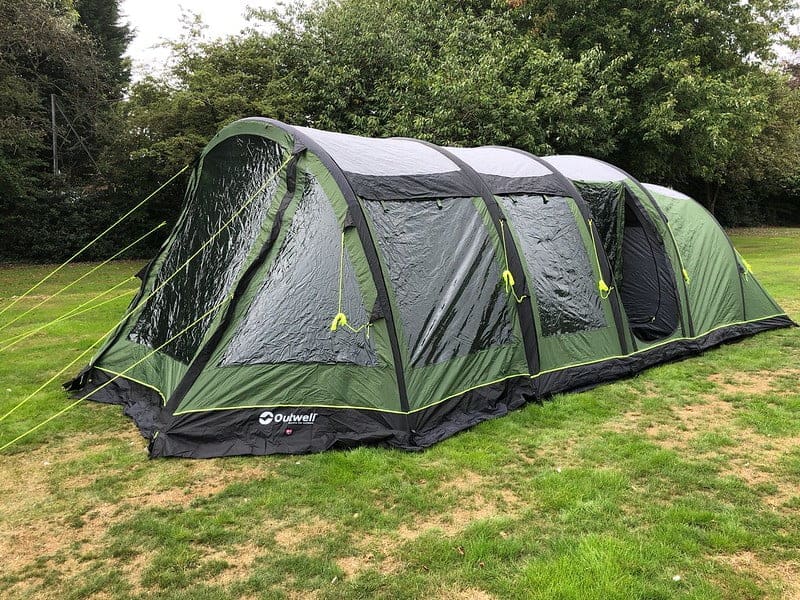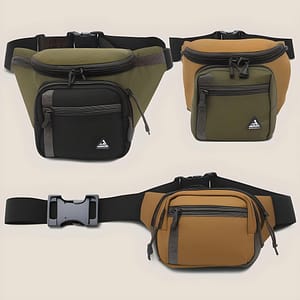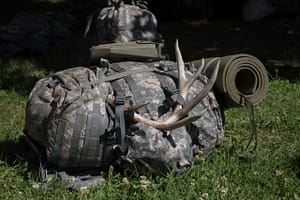Inflatable tents have become increasingly popular among outdoor enthusiasts and campers. With their ease of use and convenience, they offer a great way to enjoy camping without the hassle of traditional tents. In this blog post, we will discuss the benefits of inflatable tent and provide some advice on how to properly inflate them, packing away, the right gear and more.
What are the advantages of inflatable tents?
1. Lightweight and Compact: Inflatable tents are typically lighter and more compact than their traditional counterparts. Traditional tents can be bulky and heavy, making them difficult to carry on longer hikes or backpacking trips. Inflatable tents, on the other hand, are designed to be lightweight and compact, making them easier to transport and store. This is particularly beneficial for campers who value mobility and want to minimize their gear’s weight.
2. Enhanced Stability: Inflatable tents are designed to offer excellent stability. The inflatable beams or tubes that form the tent’s structure provide a sturdy and rigid framework. This makes the tent more resistant to strong winds and adverse weather conditions compared to traditional tents. Inflatable tents are less likely to collapse or suffer damage during a storm, ensuring a safer camping experience.
3. Easy and Quick Setup: One of the main advantages of inflatable tents is the quick and easy setup process. A single person can set up the Inflatable tent with minimal effort. Most inflatable tents come with an electric pump that can be connected to a power source, making the inflation process even easier. Unlike traditional tents that require assembling poles and complex structures, you can set up your inflatable tents within minutes. All you need is a pump, and you can inflate the tent effortlessly. This means less time spent on pitching the tent and more time enjoying the great outdoors.
So how do I set up an inflatable tent?
Setting up an inflatable tent can be a breeze once you get the hang of it. Unlike traditional tents that require poles and stakes, inflatable tents utilize air to create a sturdy and secure shelter. They are becoming increasingly popular among campers due to their convenience and ease of use.
To set up an inflatable tent, follow these steps:
1. Find a suitable location: Choose a flat and level area for your tent. Clear any rocks or sharp objects that may puncture the tent material.
2. Unpack the tent: Remove the tent from its storage bag and lay it out flat on the ground.
3. Locate the inflation points: Most inflatable tents have multiple inflation points. These are usually located near the base of the tent or on the side. Familiarize yourself with these points before inflating the tent.
4. Connect the pump: Attach the pump to the inflation points of the tent. Make sure the pump is properly connected and secured.
5. Start inflating: Turn on the pump and let it inflate the tent. Most inflatable tents have separate chambers, so inflate each chamber one by one. Keep an eye on the pressure gauge to ensure you don’t overinflate the tent.
6. Secure the tent: Once the tent is fully inflated, check for any wrinkles or sagging areas. Adjust the tension straps or guy lines to ensure a taut and stable structure.
7. Stake down the tent: While inflatable tents don’t require stakes for support, it’s a good idea to use them to keep the tent in place during windy conditions. Insert stakes through the designated loops or straps on the tent.
8. Test the stability: Give the tent a gentle shake or push to test its stability. If it feels secure, you’re ready to start enjoying your camping.
Packing away an inflatable tent
Packing away an inflatable tent is a straightforward process that can be done in a few simple steps. Here’s how to pack away your inflatable tent:
1. Deflate the tent: Start by disconnecting the pump from the tent and opening all the valves to release the air. Depending on the design of your tent, you may need to unscrew the valves or push a button to release the air. Make sure to remove any stakes or pegs holding the tent.
2. Fold the tent: Once the tent is fully deflated, begin folding it by starting at one end and folding it inwards towards the center. Repeat this process until the tent is folded into a compact shape.
3. Roll or bundle the tent: After folding the tent, you can either roll it up tightly or bundle it together. Rolling the tent can help save space and make it easier to pack. Alternatively, you can bundle the tent by folding it into a square shape and securing it with straps or bungee cords.
4. Pack it into a storage bag: If your inflatable tent came with a storage bag, place the folded or rolled tent inside. Make sure to pack it neatly to avoid damage. If a storage bag was not provided, you can use a duffel bag or a waterproof compression sack to store the tent.
5. Store in a dry and cool place: It’s important to store your inflatable tent in a dry and cool place to prevent any damage. Moisture and heat can negatively impact the material of the tent and cause it to weaken or develop mold. Find a storage area that is free from direct sunlight and humidity, such as a basement, garage, or closet. Ensure that the tent is clean and dry before storing it.
Maintenance of an inflatable tent
Regularly inspect and maintain your inflatable tent: To ensure its longevity and optimal performance, it’s important to regularly inspect and maintain your inflatable tent. Before each camping trip, give your tent a thorough check for any signs of wear and tear, such as punctures, leaks, or loose seams. Repair any damages promptly using a repair kit or patch, following the manufacturer’s instructions.
Clean your inflatable tent after each use: Properly cleaning your inflatable tent after each use is essential to remove any dirt, debris, or stains that may have accumulated. Gently wipe down the tent with a mild soap or tent cleaner, using a soft cloth or sponge. Avoid using harsh chemicals, abrasive cleaners, or scrubbing vigorously, as these can damage the tent material. Rinse off the soap thoroughly and allow the tent to air dry before packing it away.
Avoid sharp objects and rough surfaces: While inflatable tents are generally durable, it’s important to be mindful of sharp objects and rough surfaces that can potentially puncture or damage the tent. Clear the camping area of any debris, rocks, or sharp objects before setting up your tent.
What gear is required?

When it comes to camping with an inflatable tent, there are a few key pieces of gear that you will need to ensure a comfortable and enjoyable experience. Here are some tips on the essential equipment for your inflatable tent:
1. Inflatable Pump: The most important equipment for your inflatable tent is, of course, an inflatable pump. This is what you will use to inflate your tent and make it ready for use. There are several types of pumps available, including manual hand pumps and electric pumps. Choose one that suits your needs and make sure it is compatible with your tent’s valves.
2. Groundsheet: A groundsheet is a must-have for any camping trip, and it is especially important for inflatable tents. A good quality groundsheet will protect the base of your tent from sharp objects and provide an extra layer of insulation. Look for a waterproof and durable groundsheet that fits the size of your tent.
3. Tent Pegs: Despite being inflatable, your tent will still need to be secured to the ground. Tent pegs are essential for this purpose. Look for lightweight and durable tent pegs that are suitable for different types of terrains. It’s a good idea to carry a few extra pegs in case any get lost or damaged.
4. Repair Kit: Accidents can happen, and it’s always better to be prepared. A repair kit specifically designed for inflatable tents should be part of your camping equipment. It should include patches, adhesive, and other tools necessary to fixe advice on how to properly inflate them.
Are inflatable tents suitable for cold weather?
Inflatable tents are a game-changer when it comes to camping in cold weather. Their quick setup time is a huge advantage in freezing temperatures. These tents, also known as air tents, are made with inflatable beams instead of traditional poles, making for a quick and easy setup. inflatable tents can be a great option for camping in colder temperatures. Here’s why:
1. Insulation: Inflatable tents are designed with multiple layers of fabric, which provide excellent insulation. This helps to keep the warmth inside the tent and prevent cold air from seeping in. Additionally, the air beams used in inflatable tents can act as a natural insulation layer.
2. Wind resistance: Inflatable tents are known for their superior wind resistance compared to traditional tents. The air beams provide a strong, rigid structure that can withstand high winds, ensuring that the tent remains stable and secure even in blustery conditions. This is especially important in cold weather when strong winds are often present.
3. Quick setup: Inflatable tents can be set up in a matter of minutes, which is a huge advantage in cold weather. Traditional tents with poles can be difficult to assemble and secure in freezing temperatures, whereas inflatable tents can be quickly inflated and set up without the need for complicated pole systems.
4. Durability: Inflatable tents are made with durable materials that can withstand harsh weather conditions, including heavy rain and wind, making them a great option for outdoor camping. The fabric used in these tents is often thick and reinforced, making it resistant to tears and punctures. This means you can trust that your inflatable tent will hold up well in cold weather and provide a reliable shelter.
Here are some tips for using inflatable tents in cold weather:
1. Pre-inflate your tent: Before heading out into cold weather, it’s a good idea to pre-inflate your tent at home or in a warmer environment. This ensures that the fabric and air beams are properly stretched and prevents any damage from occurring when inflating in colder temperatures. Follow the manufacturer’s instructions carefully and ensure that all air beams are fully inflated. This will help the tent maintain its structure and insulation properties.
2. Insulate the floor: While inflatable tents provide excellent insulation, the floor may still feel cold. To combat this, consider using a thick groundsheet or a foam camping mat to add an extra layer of insulation between you and the cold ground.
3. Use a good quality sleeping bag: In cold weather, a quality sleeping bag is essential for staying warm at night. Choose a bag with a lower temperature rating than the expected nighttime temperatures to ensure you stay comfortable throughout the night.
4. Ventilation is key: While staying warm is important in cold weather, it’s also crucial to have proper ventilation in your inflatable tent. Condensation can build up inside the tent, leading to a damp and uncomfortable environment. Open up the vents during the day to allow for airflow and close them at night to retain heat.

And what about blackout the tent?
If you’re looking to blackout your inflatable tent for a better night’s sleep while camping, there are a few options you can consider. Here are some steps to help you achieve a dark and restful sleep environment:
1. Choose a tent with blackout features: When purchasing an inflatable tent, look for models that come with blackout technology. These tents are designed with special fabrics or coatings that block out light, providing a darker sleeping area.
2. Use blackout curtains or blinds: If your inflatable tent does not have built-in blackout features, you can still create a dark sleeping environment by using blackout curtains or blinds. You can easily attach the curtains or the blinds to the windows or the openings of your tent to block out light.
3. Cover the tent with a dark-colored tarp: Another option is to cover your inflatable tent with a dark-colored tarp. This can help block out any external light sources and create a darker space inside the tent.
4. Pack a sleep mask: If all else fails, consider packing a sleep mask. This can be a handy accessory to have, especially if you’re camping in an area with a lot of ambient light. A sleep mask can effectively block out light and help you sleep more comfortably.
Keep in mind that while these methods can help darken your inflatable tent, they might not completely eliminate all sources of light. It’s important to choose a suitable camping location and position your tent away from any bright lights or direct sunlight to further enhance the sleep environment.
In conclusion:
In conclusion, inflatable tents are the bomb when it comes to camping. They have so many advantages that make your outdoor adventure way more awesome. First off, they’re super easy to set up and take down. No more struggling with a million poles and confusing instructions. Just pump it up and boom, you’re ready to relax.
And let’s not forget about the comfort, man. Inflatable tents provide a cozy and comfy space for you to crash after a long day of hiking and exploring. Plus, they’re built to withstand the elements, so you don’t have to worry about getting soaked in a surprise rainstorm. Make sure you choose a spot with level ground to avoid any uncomfortable slopes while you sleep. And speaking of sleep, it’s important to stay warm and well-ventilated. Choose a sleeping bag with a lower temperature rating, and open up those vents during the day to let in some fresh air.
As with everything, it is important to emphasize the importance of choosing the right tent. Not all inflatable tents are created equal, so it’s important to choose one that is specifically designed for cold weather camping. Look for tents that have multiple layers of fabric for insulation and reinforced air beams for added strength.
Happy camping!





